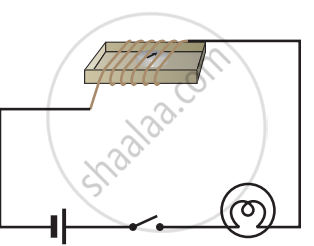Advertisements
Advertisements
Question
The accompanying figure shows some electrical appliances connected in a circuit in a house. Answer the following questions.
- By which method are the appliances connected?
- What must be the potential difference across individual appliances?
- Will the current passing through each appliance be the same? Justify your answer.
- Why are the domestic appliances connected in this way?
- If the T.V. stops working, will the other appliances also stop working? Explain your answer.
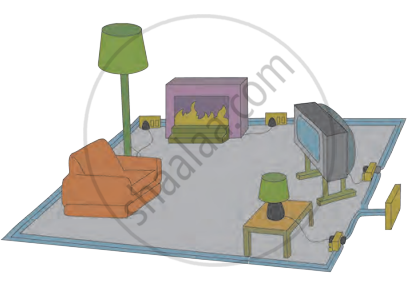
Solution
- The appliances are connected in parallel.
- The potential difference across each appliance should be the same as they are connected in parallel. The potential difference between live and neutral wire in domestic wiring is maintained at 220 V in India. Hence, the potential difference across each appliance should be 220 V.
- In general, different. We have `"I" = "V"/"R"`. Even if the voltage (V) is the same, the resistance (R) can be different. Hence, the current (I) through each appliance may not be the same.
- Domestic appliances are connected in parallel because this connection assures that even if one or more appliances become faulty or stop working, the working of others will remain unaffected.
- Other appliances won't stop operating even if the TV does because they are linked in parallel across the supply.
APPEARS IN
RELATED QUESTIONS
What do the following symbols mean in circuit diagrams?

Draw circuit symbols for
a battery of three cells
Who will spend more electrical energy? 500 W TV Set in 30 mins, or 600 W heater in 20 mins?
Resistances R1, R2, R3 and R4 are connected as shown in the figure. S1 and S2 are two keys. Discuss the current flowing in the circuit in the following cases.
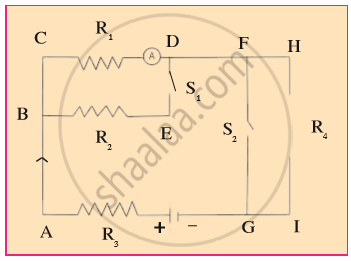
- Both S1 and S2 are closed.
- Both S1 and S2 are open.
- S1 is closed but S2 is open.
Draw a neat diagram showing a open electric circuit.
Name the instrument used to control current in an electric circuit.
______ is the device used to close or open an electric circuit.
In the given circuit diagram, which of the given switch(s) should be closed. So that only bulb A glows.
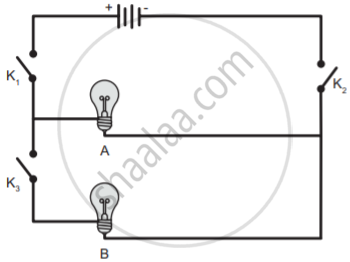
In the circuit shown, which switches (L,M or N) must be closed to light up the bulb?

Which of the following a simple circuit must-have?
When a circuit is open, _____ cannot pass through it.
In an electrical circuit three incandescent bulbs A, B and C of rating 40 W, 60 W and 100 W respectively are connected in parallel to an electric source. Which of the following is likely to happen regarding their brightness?
In an electrical circuit two resistors of 2 Ω and 4 Ω respectively are connected in series to a 6 V battery. The heat dissipated by the 4 Ω resistor in 5 s will be
When an electric current flows through a copper wire AB as shown in Figure14.1, the wire
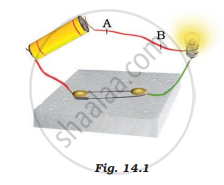
Choose the statement which is not correct in the case of an electric fuse.
Our body is a ________________ of electricity.
A complete circuit is left on for several minutes, causing the connecting copper wire to become hot. As the temperature of the wire increases, the electrical resistance of the wire
An electric motor rated 1100 W is connected to 220 V mains. Find:
- The current drawn from the mains,
- Electric energy consumed if the motor is used for 5 hours daily for 6 days.
- Total cost of energy consumed if the rate of one unit is 5.
Assertion: People struck by lightning receive a severe electrical shock.
Reason: Lightning carries very high voltage.
Set up the circuit shown in Figure again. Move the key to ‘ON’ position and watch carefully in which direction the compass needle gets deflected. Switch ‘OFF’ the current. Now keeping rest of the circuit intact, reverse the connections at the terminal of the cell. Again switch ‘on’ the current. Note the direction in which the needle gets deflected. Think of an explanation.
